发布时间:2022年04月15日 03:09:11分享人:慢热来源:互联网16
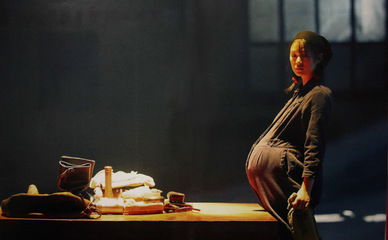
The Sun Also Rises is a 1926 novel written by Ernest Hemingway andconsidered a treatise of the post-WWI generation dubbed the LostGeneration. Arguably the best modernist novel of the period by anAmerican, it received mixed reviews upon publication. Hemingwaybiographer Jeffrey Meyers writes that it is "recognized as [his]greatest work", and Hemingway scholar Linda Wagner-Martin calls ithis most important novel.[1] Critics generally agree that the novelhas withstood the test of time based on style, but point toattitudes, such as the antisemitic treatment of a Jewish character,as dated. The basis for the novel wasHemingway's 1925 trip to Spain. The story centers around a group ofAmerican and British expatriates who travel from Paris to theFestival of Fermín in Pamplona to watch the running of the bullsand the bullfights. The setting was considered unique andmemorable, presenting the seedy café life of Paris, the Pamplonafestival, with a middle section devoted to fishing in the Pyrenees.Equally startling was Hemingway's spare writing style, combinedwith his restrained use of description to convey characterizationsand action, which became known as the iceberg theory. Hemingwaybegan writing the novel on his birthday (21 July) in 1925, whilestill in Pamplona. He finished the draft manuscript barely twomonths later in September. After putting aside the manuscript for ashort period, he worked on revisions during the winter of 1926while visiting Schruns, Austria. The novel was published by CharlesScribner's Sons in the US in October 1926, and in the UK in 1927 asFiesta by Jonathan Cape. It has been continously in print since itspublication. On the surface the novel is a love story between thehero Jake Barnes—a man whose war wound has made himimpotent—and the sexually promiscuous divorcèe Lady BrettAshley. Brett's earlier affair with Robert Cohn causes Jake to beupset and break off his friendship with Cohn; her seduction of the19-year-old matador Pedro Romero in Pamplona causes Jake to losehis good reputation among the Spaniards. A roman à clef, thenovel's characters are based on real people and the action on realevents. The primary themes are the notion that the post-WWIgeneration was a 'lost generation', decadent and dissolute,irretrievably damaged by the war; death; renewal in nature; andliving life purely, to the best of one's ability in an authenticmanner. Background Hemingway lived in Paris in the1920s, where he was foreign correspondent for the Toronto Star,traveling frequently to places such as Smyrna where he covered thethe Greco-Turkish War. During this period he gained writingexperience that he wanted to translate to writing fiction. Hebelieved fiction could be based on reality in such a way that if awriter were to distil his experiences then "what he made up wastruer than what he remembered". He first visited the Festival ofSan Fermín in Pamplona in 1923 where he became fascinated bybullfighting.[3] He and his wife Hadley returned to Pamplona in1924—enjoying the trip immensely—with Chink Dorman-Smith, JohnDos Passos, and Donald Ogden Stewart and his wife.[4] They returnedfor their third time in June 1925. That year they were joined by adifferent group American and British expatriates: Hemingway'sMichigan boyhood friend Bill Smith, Donald Odgen Stewart, Lady DuffTwysden (recently divorced), her ex-husband Pat Guthrie, and HaroldLoeb. In Pamplona the group quickly disintegrated. Hemingway, whowas attracted to Lady Duff, was intensely jealous of Loeb, who hadrecently been on a romantic getaway with her, and by the end of theweek the two men had a public fist-fight. Against this backgroundwas the influence of the young matador from Ronda, CayetanoOrdó?ez, whose brilliance in the bullring affected the spectators.Ordó?ez honored Lady Duff by presenting her, in the bullring, withthe ear of a bull he killed; an honor she failed to appreciate.Outside of Pamplona, the fishing trip to the Irati was marred bypolluted water.[5] At the time, Hemingway intended to write anon-fiction book about bullfighting[4] but realized the experiencesof that week presented good material for a novel. A few days afterthe fiesta ended, on his birthday (21 July), he began writing,finishing two months later on 21 September.[6] By 17 August, with14 chapters written and the working title of Fiesta chosen,Hemingway returned to Paris. He finished the draft on 21 September1925, writing a forward the following weekend and changing thetitle to The Lost Generation.[7] Hemingway and Hadley went toSchruns, Austria in December 1925, where Pauline Pfeiffer joinedthem. During the next three months he revised heavily, and traveledto New York to sign a contract with Scribner's (leaving Hadleyalone in Schruns).[8] He then devoted the following six months torewriting, working on the manuscript while traveling. He finishedthe final draft in Paris at the end of August in 1926.[9] Duringthis period his marriage to Hadley disintegrated and, alone inParis, he completed the proofs, and then dedicated the novel to hiswife and son.[6] By November they had separated and Hemingwayoffered Hadley the royalties from The Sun Also Rises.Publication history Hemingway likely broke thecontract with his publishers for the opportunity to have The SunAlso Rises published by Scribner's. He had a three book contractwith Boni & Liveright with a termination clause ifthey rejected a book. In December 1925 he quickly wrote TheTorrents of Spring—a short satirical novel about the publishingindustry—and submitted the manuscript. Unamused by the satire,Boni & Liveright immediately rejected it andterminated the contract.[11] A month later Scribner's agreed topublish The Torrents of Spring and all of Hemingway's subsequentwork.[12] Scribner's published the novel on 22 October 1926. Itsfirst edition consisted of 5090 copies, selling at $2.00 percopy.[13] Two months later the book was in a second printing with7000 copies sold and subsequent printings were ordered.[14] In 1927the novel was published in the UK by Jonathan Cape. The novel's twoepigraphs were left out in the UK edition.[15] Two decades later,in 1947, Scribner's had a boxed-set release of three of Hemingway'sworks, including The Sun Also Rises, A Farewell to Arms, and ForWhom the Bell Tolls.[16] In 1983 the New York Times reported thatThe Sun Also Rises had been continuously in print since itspublication in 1926, and was likely one of the most translatedtitles in the world. At that time Scribner's began printing cheapermass-market paperbacks of the book, in addition to the moreexpensive trade paperbacks already in print.[17] In 2006 Simon& Schuster began releasing audiobook versions ofHemingway's novels, including The Sun Also Rises.[18] A firstedition of the first printing, with dust-jacket and inscription byHemingway, now sells at auction for between $80,000 and $120,000.Plot summary The narrator of The Sun Also Rises isJake Barnes, an expatriate American journalist living in Paris.Barnes suffered a war-wound that caused him to be impotent, thoughthe nature of his wound is never explicitly described in the novel.He is in love with Lady Brett Ashley, a twice-divorcedEnglishwoman. Brett, with her bobbed hair, embodies the new sexualfreedom of the 1920s, having had numerous love affairs. Book one isset in the Café society of Paris. In the opening scenes, Jakeplays tennis with his college friend Robert Cohn, picks up aprostitute in one scene, and escapes with Brett from a gathering ata nightclub. She tells him she loves him, but they both realizethey have no chance at a lasting relationship. In Book two Jake isjoined by Bill Gorton, recently arrived from New York, and Brett'sfiancé Mike Campbell who arrives from Scotland. Jake and Billtravel to Spain where they meet Cohn north of Pamplona for afishing trip. Cohn, however, leaves for Pamplona to wait for Brettand Mike. Cohn had an affair with Brett a year earlier and stillfeels possessive of her despite her engagement to Mike. Jake andBill enjoy five days of tranquility, fishing the streams nearBurguete, after which they travel to Pamplona, reuniting with thegroup where they begin to drink heavily. Cohn's presence isincreasingly resented by the others, who taunt him withanti-Semitic remarks. During the fiesta the characters drink, eat,watch the running of the bulls, attend bullfights, and bicker witheach other. When Jake introduces Brett to Romero, the youngbullfighter, she is smitten with the 19-year-old and seduces him.The jealous tension between the men builds; Mike Campbell, Jake,Robert Cohn, and Romero each love Brett. Cohn, a champion boxer incollege, has fistfights with Jake, Mike, and Romero, whom heinjures. In spite of the tension, Romero continues to performbrilliantly in the bullring. Book three shows the characters in theaftermath of the fiesta. Sober again they leave Pamplona. BillGorton returns to Paris, Mike Campbell stays in Bayonne, and Jakegoes to San Sebastián in northeastern Spain. As Jake is about toreturn to Paris he receives a telegram from Brett, who has gone toMadrid with Romero, asking for his help. He finds her in a cheaphotel, without money, and without Romero. She announces she hasdecided to marry Mike Campbell. The novel ends with Jake and Brettin a taxi speaking of the things that might have been.Writing style The novel is well-known for itsstyle which is variously described as modern, hard-boiled, orunderstated.[20] As a novice writer and journalist in Paris,Hemingway turned to Ezra Pound—who had a reputation as "anunofficial minister of culture who acted as mid-wife for newliterary talent"—to blue-ink his short stories.[21] From Pound,Hemingway learned to write in the modernist style: usingunderstatement, paring away sentimentalism, and presenting imagesand scenes without explanations of meaning, most noticeable in thebook's ending with multiple future possibilities for Brett andJake.[20][note 1] Hemingway scholar Anders Hallengren writes thatbecause Hemingway learned from Pound to "distrust adjectives" hecreated a style "in accordance with the esthetics and ethics ofraising the emotional temperature towards the level of universaltruth by shutting the door on sentiment, on the subjective".[22] F.Scott Fitzgerald told Hemingway to "let the book's action playitself out among its characters". Hemingway scholar LindaWagner-Martin writes, that in taking Fitzgerald's advice, Hemingwayproduced a novel without a central narrator: "Hemingway's book wasa step ahead; it was the modernist novel".[23] When Fitzgeraldadvised Hemingway to trim at least 2500 words from the openingsequence, which was 30 pages long, Hemingway instead wired thepublishers telling them to cut the opening 30 pages altogether. Theresult was a novel without a focused starting point, which was seenas a 'modern' perspective and critically well-received.[24]Wagner-Martin speculates that Hemingway may have wanted to have aweak or negative hero as defined by Edith Wharton, but he had noexperience creating a hero or protagonist. At that point hisfiction consisted of extremely short stories, not one of whichfeatured a hero.[25] The hero changed during the writing of thenovel: first the matador was the hero, then Cohn was the hero, thenBrett, and finally Hemingway realized "maybe there is not any heroat all. Maybe a story is better without any hero".[26] WilliamBalassi believes that in eliminating other characters as theprotagonist he brought Jake indirectly into the role as the novel'shero. A roman à clef, Hemingway based the characters on realpeople and caused an uproar in the expatriate community. The earlydraft included the real names of the group; Hadley's character wascut early to allow room for the Brett/Jake love story.[29] Althoughwritten in a journalistic style, Frederic Svoboda writes that thestriking thing about the novel is "how quickly it moves away from asimple recounting of events".[30] Jackson Benson believes Hemingwayused autobiographical details as framing devices about life ingeneral. For example, Benson says that Hemingway used hisexperiences and drew them out with "what if" scenarios: "what if Iwere wounded in such a way that I could not sleep at night? What ifI were wounded and made crazy, what would happen if I were sentback to the front?"[31] Hemingway believed the writer coulddescribe one thing though an entirely different thing occurs belowthe surface, which he called the iceberg theory, or the theory ofomission.[32] Balassi says Hemingway applied the iceberg theorybetter in The Sun Also Rises than in any of his other works, byediting away extraneous material or purposely leaving gaps in thestory. He made editorial remarks in the manuscript which show hewanted to break from the stricture of "clear restrained writing" asGertrude Stein had advised. In the earliest draft, the novel beginsin Pamplona but Hemingway moved the opening setting to Parisbecause he thought the Montparnasse life was necessary as acounterpoint to the later action in Spain. He wrote of Parisextensively, intending "not to be limited by the literary theoriesof others, [but] to write in his own way, and possibly, tofail".[33] He added metaphors for each character: Mike's moneyproblems, Brett's association with the Circe myth, Cohn'sassociation with the segregated steer.[34] It wasn't until therevision process that he pared down the story, taking outunnecessary explanations, minimizing descriptive passages, andstripping down the dialogue, which created a "complex but tightlycompressed story".[35] Hemingway admitted that he learned from theKansas City Star style-sheet, where he worked as cub reporter, whathe needed as a foundation for his writing.[note 2][36] Critic JohnAldridge says that the minimalist style resulted from Hemingway'sbelief that to write authentically, each word had to be carefullychosen for its simplicity and authenticity and carry a great dealof weight. Aldridge writes that Hemingway's style "of a minimum ofsimple words that seemed to be squeezed onto the page against agreat compulsion to be silent, creates the impression that thosewords—if only because there are so few of them—aresacramental".[37] In Paris Hemingway had been experimenting withthe sound of the King James Bible, reading aloud with his friendJohn Dos Passos. From the style of the biblical prose he learned toincrement his prose; the action in the novel buildssentence-by-sentence, scene-by-scene and chapter-by-chapter. Thesimplicity of his style, however, is deceptive. Harold Bloom writesthat it is his effective use of parataxis which elevatesHemingway's prose. Drawing on the Bible, Walt Whitman andAdventures of Huckleberry Finn, Hemingway wrote in a deliberateunderstatement and heavily incorporated parataxis, which in somecases almost become cinematic.[39] H
爱华网本文地址 » http://www.413yy.cn/a/25101014/211906.html
更多阅读
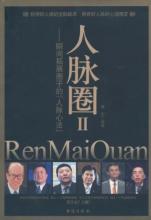
系列专题:《圈子圈套3》洪钧一时无语,他再一次领教到科克的犀利与老辣,科克这一拦给双方都留下了回旋的余地。洪钧等待着科克即将对自己发动的感情攻势,暗自盘算该如何狠下心回绝,他听见科克问:“你觉得我是不是一个称职的老板?”“当然,你
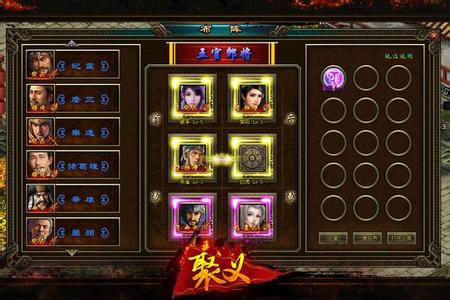
虎贲(hǔbēn),古代称宫廷禁卫军的将领,也称勇士为虎贲。虎贲的意思是如同老虎勇猛地奔走追逐野兽。《周礼・夏官・虎贲士》注云:“王出将虎贲士居前后”。根据周礼的记载,夏朝的官员里有虎贲氏,汉代有虎贲中郎将、虎贲郎,历代沿用,一直到
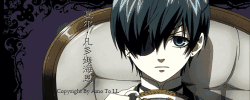
PS CS6中如何制作简易GIF动画图片――简介PS为我们提供了强大的设计制作功能,大部分朋友都只使用到其中的一部分功能,PS CS1开始又在软件里植入了动画制作功能,最新版的PS CS6中如何制作动画呢?我来逐步为大家讲述。PS CS6中如何制作简
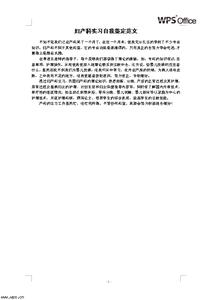
不知不觉我们已在产科呆了一个月了,在这一个月来,使我充分扎实的学到了不少专业知识。妇产科不同于其他科室,它的专业功底是很雄厚的,只有真正的去努力学会吃透,才算得上是精益求精。在带教王老师的指导下,每个星期我们都获得了理论
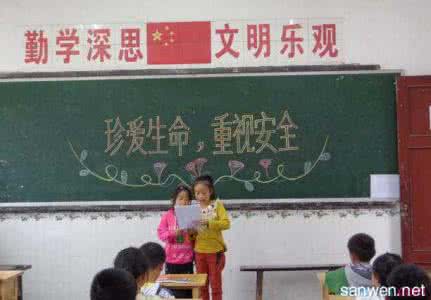
为了让安全能与孩子同行,让孩子们健康快乐的成长,家长和学校应该担负起孩子的保护责任。爱华网小编为大家准备了119消防安全教育主题班会演讲稿,供大家参考。 119消防安全教育主题班会演讲稿一 今天我演讲的题目是《生命&#







